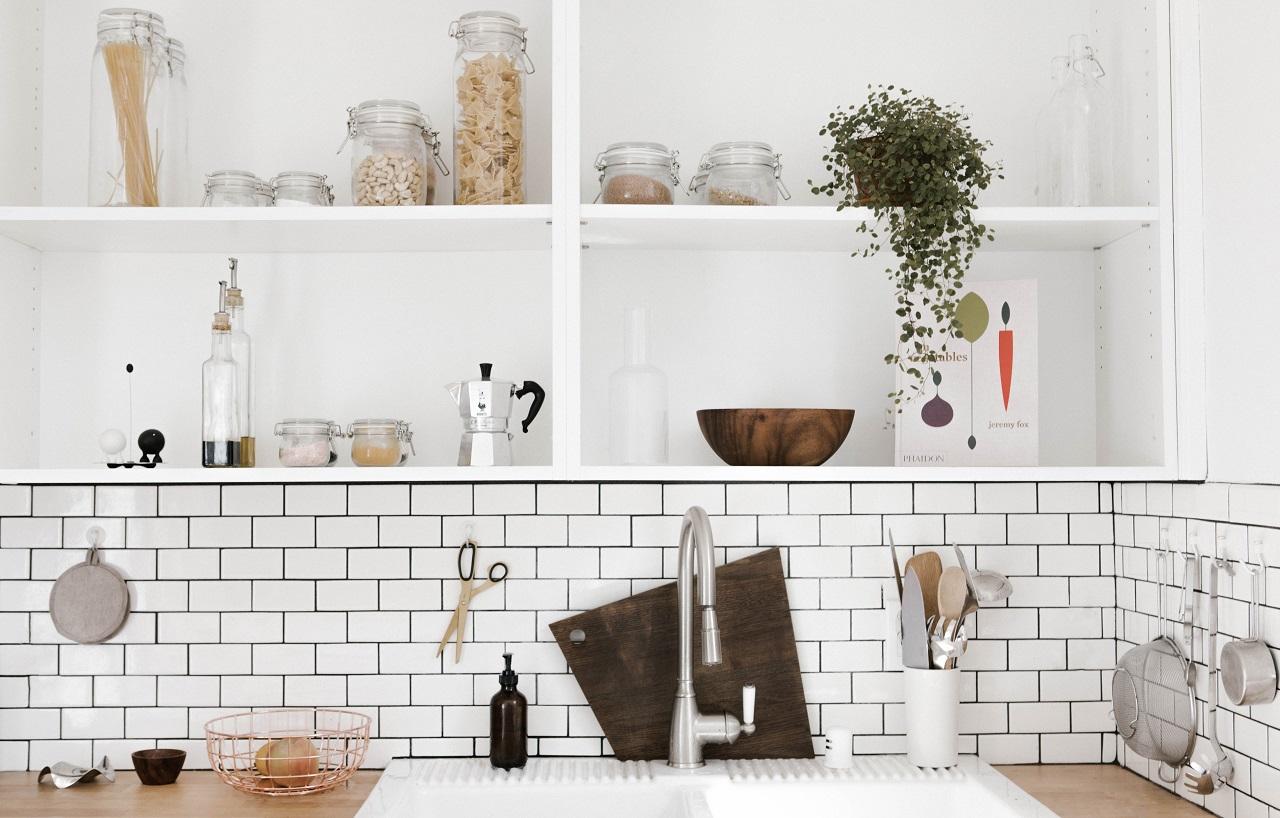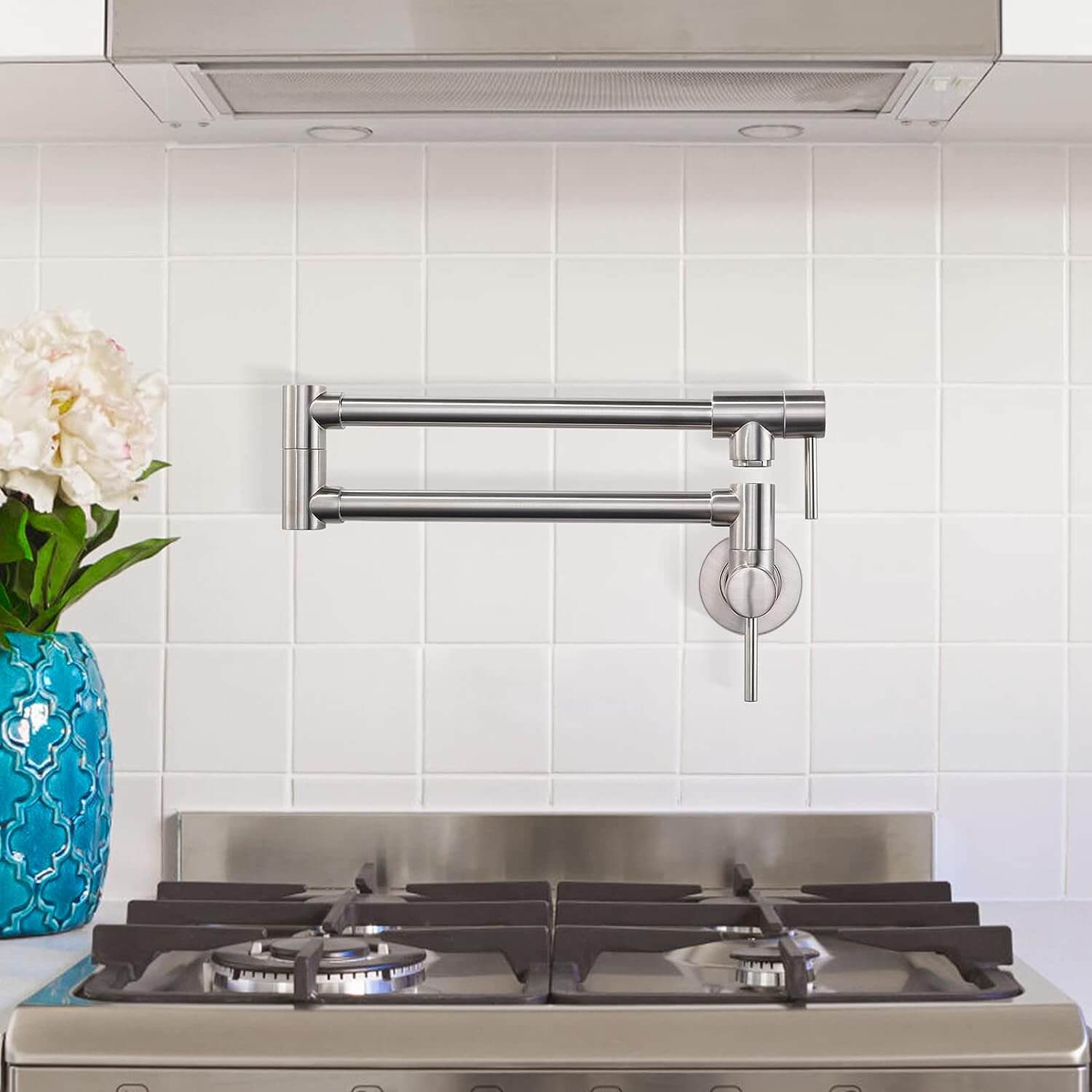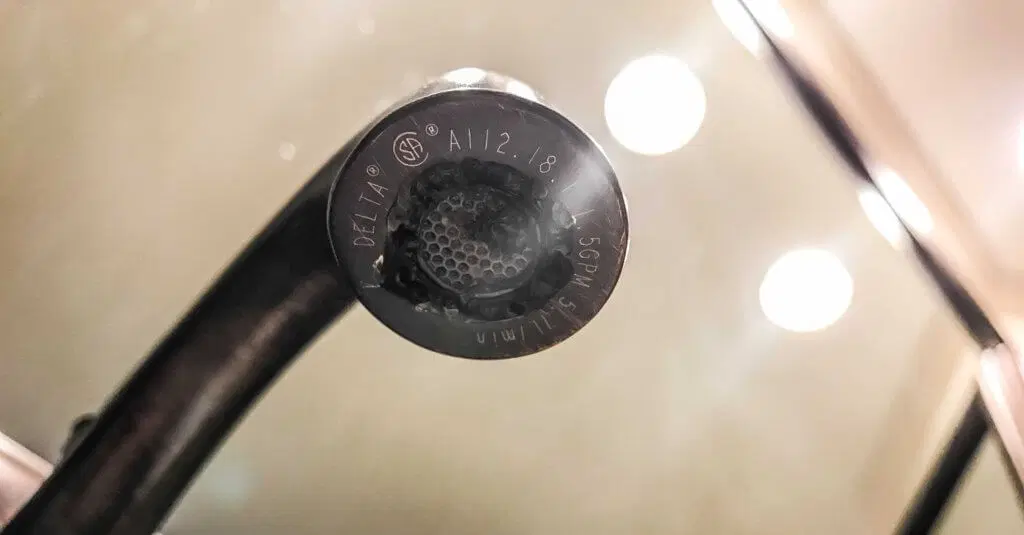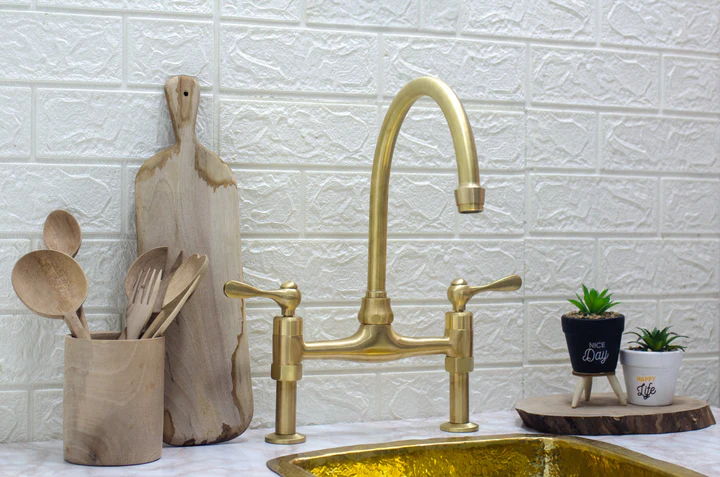
When it comes to kitchen design, one of the most frequently asked questions is whether or not you need tiles behind the kitchen sink. After all, tiles are often used as a backsplash in kitchens to protect walls from water, grease, and food splashes. But when it comes to the area directly behind the kitchen sink, it’s worth considering a few important factors before making a decision.
In this post, we’ll explore the reasons why you may or may not need tiles behind your kitchen sink, alternative options for wall protection, and tips for making the best choice for your kitchen’s aesthetic and practicality.
Why Tiles Behind a Kitchen Sink Are a Good Idea
- Protection from Water Damage One of the primary reasons for installing tiles behind a kitchen sink is the protection they provide against water damage. When you wash dishes, rinse vegetables, or clean the sink, water splashes can easily hit the wall behind the sink. Over time, this constant exposure to moisture can cause paint to peel, drywall to deteriorate, or even mold to grow. Tiles, being water-resistant, form a protective barrier that prevents water from seeping into the wall. This is especially important in kitchens where the sink is used frequently.
- Easy to Clean The area behind the sink is bound to accumulate splashes of food, grease, and soap scum, making it one of the more challenging areas to clean in the kitchen. Tiles are easy to wipe down and are less likely to stain compared to painted walls. Many kitchen tiles are smooth and can be quickly cleaned with a damp cloth and mild soap, while some even have anti-microbial properties to resist bacteria and mold growth. For homeowners who prefer low-maintenance surfaces, tiles offer a practical solution.
- Durability and Longevity Tiles are known for their durability, which makes them an ideal choice for high-use areas like behind the kitchen sink. High-quality ceramic or porcelain tiles are resistant to chipping, scratching, and discoloration. Unlike other materials that may fade or wear down over time, tiles can last for many years without needing significant repairs or replacement. This makes them a long-term investment in maintaining the integrity and appearance of your kitchen.
- Design and Aesthetic Appeal Tiles behind the sink can also play a major role in enhancing the overall look of your kitchen. Whether you go with classic subway tiles, intricate mosaics, or bold patterns, tiles can complement your kitchen’s design and add a touch of style. Tiles offer a wide variety of textures, colors, and finishes, making it easy to match your backsplash with the rest of the kitchen decor. If you want to make a statement or create a focal point in your kitchen, the area behind the sink is a great place to do it.
Why You Might Not Need Tiles Behind Your Kitchen Sink
- Alternative Wall Protection Materials While tiles are one of the most common materials used behind kitchen sinks, they’re not the only option. There are several alternative materials that can serve the same purpose of protecting the wall from water damage, and some of them may be better suited to your kitchen’s design and functionality.
- Painted Walls with Waterproofing: If you prefer a more minimalist or modern look, you can opt for a painted wall behind the sink, as long as you use water-resistant paint. Many modern kitchen paints are designed to resist moisture and staining, especially when combined with a clear waterproof sealant. This option offers a sleek, seamless look but requires careful maintenance to ensure the wall stays in good condition.
- Stainless Steel Panels: Stainless steel is another popular material for the area behind kitchen sinks. It’s highly resistant to water, grease, and heat, making it an excellent option for a kitchen splashback. Stainless steel also has a modern, industrial appeal and is easy to clean, though it can show water spots and fingerprints more easily than tiles.
- Glass Backsplashes: Glass panels behind the sink are becoming increasingly popular for their smooth, easy-to-clean surface and contemporary appearance. Glass is water-resistant and comes in a variety of colors and finishes, making it versatile for any kitchen style. Additionally, glass panels can be installed as large, seamless sheets, which can give the space a sleek, modern feel without the grout lines associated with tiles.
- Laminate Panels: Laminate is another cost-effective alternative to tiles behind the kitchen sink. It’s durable, water-resistant, and available in many designs, including wood-look or stone-look finishes. Laminate panels are also easy to install and can be a good option for a budget-friendly renovation.
- Cost and Time Considerations While tiles can add beauty and functionality to your kitchen, they do come with associated costs—both in terms of materials and installation. The cost of tiling the area behind the sink can vary depending on the type of tile you choose (ceramic, porcelain, or natural stone), the size of the area, and the complexity of the installation process. Professional tile installation can also add to the cost, especially if your kitchen has uneven walls or requires custom tile cutting.
If you’re on a tight budget or need a quicker renovation, alternative materials like paint, stainless steel, or glass may be more cost-effective and faster to install than traditional tile work.
- Aesthetic Preferences Depending on your personal style, you may prefer the look of a smooth, uninterrupted wall rather than a tiled backsplash. If you’re going for a minimalist, industrial, or modern aesthetic, tiles may feel out of place behind the sink. In such cases, other materials or simply leaving the wall bare could create a more cohesive, clean look that better suits your design vision.
- Maintenance Requirements While tiles are easy to clean, they do have some maintenance requirements. Grout lines between tiles can accumulate dirt, mold, and mildew over time, which can make the area behind the sink harder to maintain. If you choose tiles, you’ll need to regularly clean and reseal the grout to prevent staining and mold growth. If you’re not keen on the ongoing upkeep, materials like stainless steel or glass might be a better low-maintenance option.
What’s the Best Option for Your Kitchen?
Ultimately, whether or not you need tiles behind your kitchen sink comes down to personal preference and the specific needs of your space. Consider the following factors when making your decision:
- Water exposure: If your kitchen sink sees a lot of splashing, tiles or another water-resistant material may be the best choice.
- Aesthetic goals: What look are you trying to achieve? If you prefer a traditional kitchen feel, tiles can be a great option. For a more modern or minimalist design, consider alternatives like stainless steel, glass, or painted walls.
- Maintenance: How much time are you willing to invest in cleaning and upkeep? Tiles require grout maintenance, while alternatives like stainless steel and glass are easier to keep spotless.
- Budget: Tiles can be expensive, especially if you’re opting for high-end materials. If you’re working with a tight budget, alternatives like paint or laminate may offer similar benefits at a lower cost.
Conclusion
Tiles behind the kitchen sink offer several benefits, including water resistance, easy cleaning, and durability. However, depending on your kitchen’s design, budget, and personal preferences, you may find that other materials like glass, stainless steel, or even painted walls serve as equally effective options. Ultimately, it’s about balancing functionality with aesthetics, so choose the option that best fits your needs and enhances your kitchen’s overall look.







